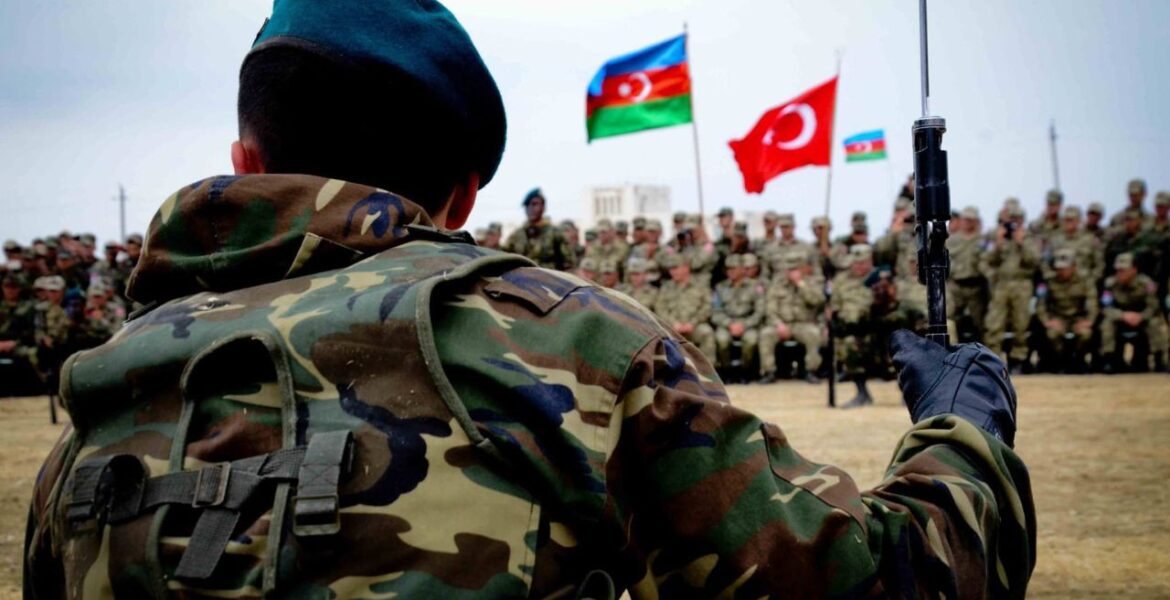September 27, in a few days’ time, will mark the first-year anniversary of the 2020 Nagorno-Karabakh War, a war that saw over 100,000 Armenians displaced from their historical homeland, with a final ethnic cleansing only prevented because of the November 10 ceasefire agreement enforced by Moscow that was furious after two of their military personnel were killed when Azerbaijan downed a Russian helicopter the day before. Following this ceasefire, Azerbaijani President Ilham Aliyev portrayed the ceasefire agreement as “the end of the conflict” and the “restoration of Azerbaijan’s territorial integrity.”
Despite Nagorno-Karabakh being ethnically, culturally and historically Armenian, the region was transferred to the administration of the Azerbaijan Soviet Socialist Republic by Moscow in 1923. This ensured permanent hostilities and destabilisation in the Caucasus as Soviet authorities pitted different ethnic groups against each other to weaken their unity and potential calls for independence. With the collapse of the Soviet Union, Azerbaijan refused to allow Nagorno-Karabakh to unite with Armenia despite a 1991 referendum finding that 99.98% of voters (with a voter turnout of 82.17%) wanting Nagorno-Karabakh to separate from Azerbaijan. The subsequent war following the collapse of the Soviet Union would see Armenian forces also capture several districts outside of Nagorno-Karabakh.
Azerbaijan, with support from Turkey and Syrian mercenaries, captured or were handed the Armenian-held districts outside of Nagorno-Karabakh, but the majority of Nagorno-Karabakh, as defined by the Soviet borders, still remains in Armenian control. It is within this context that Azerbaijan gives contradictory remarks. On the one hand, Aliyev says the conflict has ended and its territorial integrity restored, but at the same time has been on tirades in the post-war period that Yerevan, the capital of the Armenian Republic, is in fact an Azerbaijani city occupied by Armenia. It is recalled that even in 2018 he said: “Yerevan is our historical territory, and we, Azerbaijanis, must return to this historical land. This is our political and strategic goal, which we must gradually approach.”
Aliyev’s claims that the war is over and Azerbaijan is satisfied with the restoration of territory is an attempt to manipulate Moscow into believing that hostilities and war in the South Caucasus is an issue of the past. Turkey and Azerbaijan expected following the 2020 Nagorno-Karabakh War that their countries would finally have contiguous territory, something that was prevented by Armenian control of the districts outside of Nagorno-Karabakh and is currently still not achievable because Armenia’s Syunik province separating Azerbaijan proper from its Nakhichevan autonomous region that directly borders Turkey.
Before launching the campaign, Turkey and Azerbaijan would not have expected Russia to come in so strongly after 44 days of war and force Azerbaijan to end it aggression whilst making it agree to the deployment of Russian peacekeepers for a minimum five-year mandate. Although Moscow is desperately attempting to force a peace on Armenia and Azerbaijan by incentivising economic opportunities from opened trade corridors, it is beginning to realize that the Azeris and Turks still have ambitions for territorial expansion.
Eurasianet reported earlier this month that “Turkish and Azerbaijani soldiers have conducted joint military exercises in Azerbaijan’s Lachin region, a stone’s throw from Russian peacekeepers, amid heightened tension between Baku and Moscow.” After Azerbaijan gained sovereignty over the districts out of Nagorno-Karabakh, the Lachin corridor became the only transportation link, and therefore lifeline, between Nagorno-Karabakh and the Armenian Republic. Azeri and Turkish special forces, marking the first time that Turkish troops have openly deployed in the territories captured during last year’s war, trained in “conducting reconnaissance in difficult terrain, setting up ambushes on the roads, detecting and destroying sabotage groups in the area, as well as secretly approaching the imaginary enemy by overcoming various obstacles” – all within 300 meters of the Russian monitored corridor.
It is also recalled that at the end of August, Azerbaijani forces blocked a critical road, thus ending transit with Iran, the country that Armenia mostly relies on to connect with the outside world. Two days after Azerbaijan ended the blockade, Russian peacekeepers conducted exercises aimed at “preventing violations by drones of a potential enemy and ensuring security of the observation posts on the Lachin corridor.”
These provocations and exercises so close to the Lachin corridor, by both Azeri-Turkish forces and Russian peacekeepers, suggest that a future war may be possible. Effectively, the only thing stopping the 140,000 Armenians of Nagorno-Karabakh from being besieged and cut off from the outside world are the 2,000 Russian peacekeepers deployed to monitor the Lachin corridor and other regions.
Although Azerbaijan gives the rhetoric that there will be no future hostilities, its actions suggest otherwise. The very existence of Armenia prevents a complete pan-Turkic contiguous region stretching from Istanbul to western China, thus preventing Turkey’s ambition of becoming a Great Power. Ankara believes that a pan-Turkic region, with Turkey at its center, will enable opportunities for immense economic, military and cultural growth, whilst forging out its own area of influence and instigating its rise as a Great Power.
As things stand, it appears that an armed conflict may start once Russia’s five-year mandate runs out. Both Armenia and Azerbaijan will have to agree for Russian peacekeepers to remain for another mandate, and if the latter refuses, Russian troops will be the only guarantors of regional security, stopping the final ethnic cleansing of Armenians from Nagorno-Karabakh, especially as Azeri troops are already training on how to cut off the Lachin corridor.
READ MORE: A new February Uprising in Armenia?

